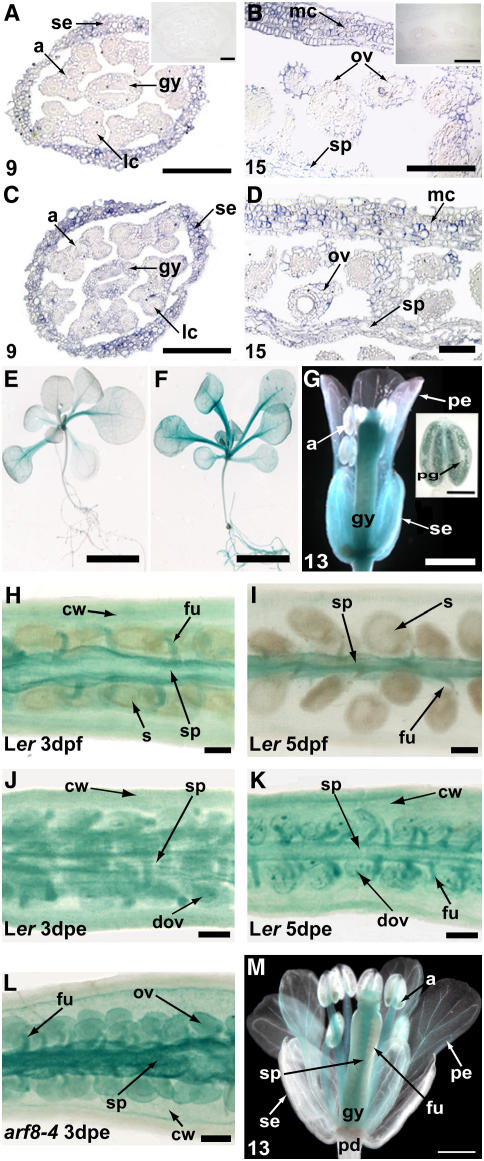Figure 4.
Expression of ARF8.
(A) to (D) In situ hybridizations on thin sections of developing Ler ([A] and [B]) and arf8-4 ([C] and [D]) flowers ([A] and [C]) and siliques ([B] and [D]) hybridized with antisense-labeled ARF8 RNA. Insets ([A] and [B]) show control hybridizations with sense-labeled ARF8 RNA. The numbers at the bottom left indicate the stages of flower development (Smyth et al., 1990). Bars = 100 μm.
(E) and (F) ARF8 is involved in the modulation of PARF8:GUS expression. Seedlings of Ler (E) and arf8-4 (F) plants transformed with the PARF8:GUS construct at 15 d after germination. Bars = 1 mm.
(G) Ler flower transformed with PARF8:GUS at anthesis (bar = 500 μm). Inset shows an anther with stained pollen (bar = 50 μm).
(H) to (L) PARF8:GUS expression in parthenocarpic pistils resembles that of fertilization-induced silique development. Ler silique 3 d after fertilization (H); Ler silique 5 d after fertilization (I); Ler silique 3 d after emasculation (J); Ler silique 5 d after emasculation (K); arf8-4 silique 3 d after emasculation (L). Bars = 50 μm.
(M) Ler flower transformed with ARF8:GUS at anthesis. Bar = 500 μm.
a, anther; cw, carpel wall; dov, degenerating ovule; dpe, days postemasculation; dpf, days postfertilization; fu, funiculus; gy, gynoecium; ov, ovule; pd, pedicel; pe, petal; pg, pollen grain; s, seed; se, sepal; sp, septum; lc, locule; mc, mesocarp.

